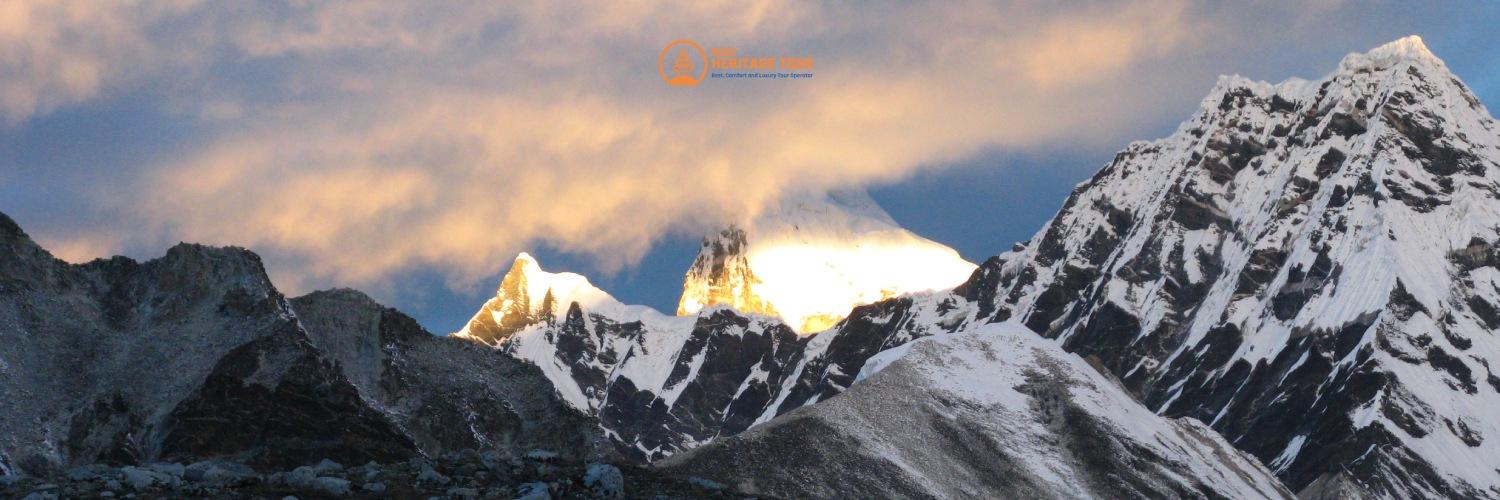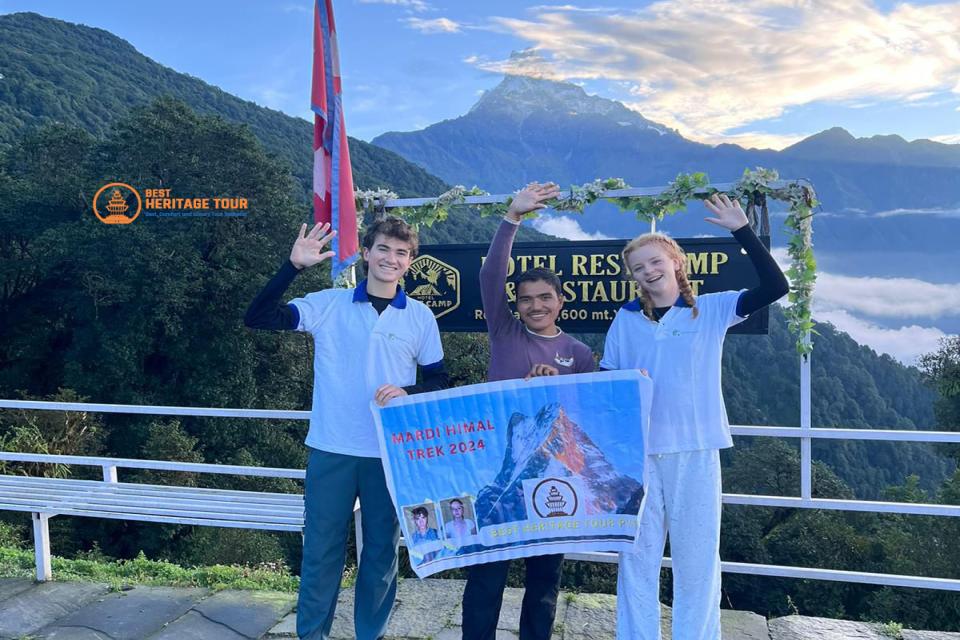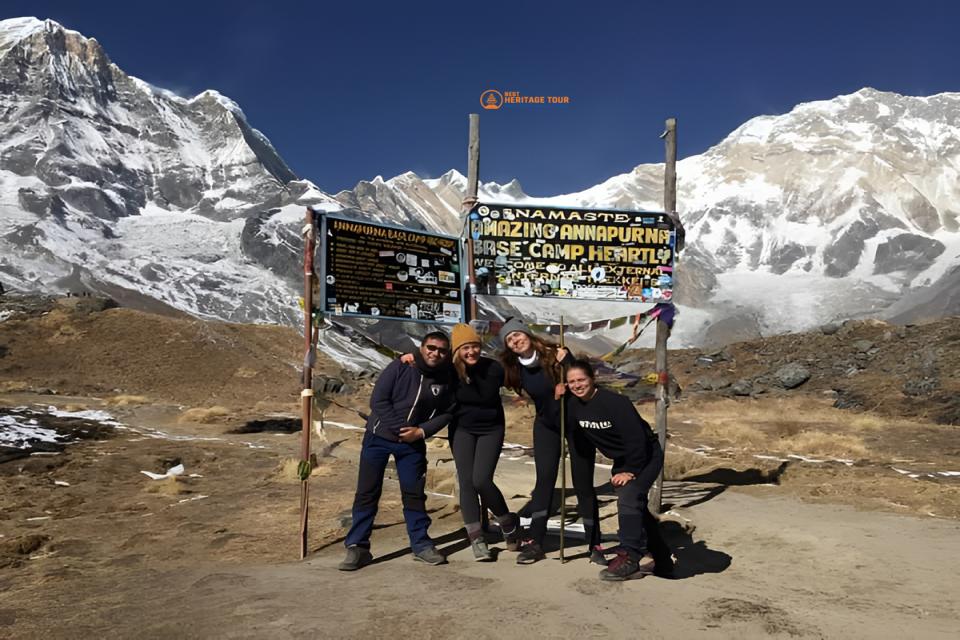Nepal, the land of the Himalayas, is a mecca for trekking enthusiasts worldwide. Its towering peaks, rich cultural heritage, and pristine natural beauty make it an unmatched destination for adventure seekers. Among the various trekking experiences Nepal offers, base camp treks hold a special place. These journeys take you to the foot of some of the world's highest and most iconic mountains, providing unforgettable landscapes, unique cultural encounters, and a true sense of achievement.
As we approach 2025 and 2026, trekking in Nepal continues to be one of the most sought-after adventure activities globally. With improved infrastructure, clearer regulations, and growing awareness about responsible tourism, now is the perfect time to plan your trek to one of Nepal’s spectacular base camps.
In this blog, we’ll explore the top 5 base camp treks in Nepal for 2025/2026, highlighting everything you need to know, from trek details and best seasons to permits, preparation tips, and sustainable trekking practices. Whether you’re a first-time trekker or a seasoned hiker, these routes promise incredible experiences that blend adventure, nature, and culture.
What is a Base Camp Trek?
A base camp trek is a journey that leads you to the base camp of a major mountain, where climbers gather to prepare for their ascent to the summit. Unlike summit treks, base camp treks focus on the trekking experience itself: stunning mountain views, vibrant local communities, and immersive natural surroundings.
Base camp treks in Nepal typically involve moderate to challenging trekking routes, requiring good fitness and acclimatization to altitude. These treks also offer unique cultural experiences with Nepal’s diverse ethnic groups, such as the Sherpas in the Everest region or the Gurungs and Magars around Annapurna region.
Trekking to a base camp is both a physical and spiritual journey, blending breathtaking landscapes with the warmth of Nepalese hospitality.
Top 5 Base Camp Treks in Nepal for 2025/2026
1. Everest Base Camp Trek
The Everest Base Camp (EBC) trek is the most iconic trek in Nepal and arguably the world. It takes adventurers through the heart of the Himalayas, leading to the base camp of Mount Everest (8,848m), the highest peak on Earth.
Highlights:
- Views of Everest, Lhotse, Nuptse, and Ama Dablam
- Visit to the famous Tengboche Monastery
- Exploring Sherpa culture in Namche Bazaar
- Glacier views and the thrilling Khumbu Icefall from afar
- Panoramic views of Everest from Kala Patthar
Difficulty: Moderate to challenging
Duration: Approximately 12-14 days
Highest Elevation: Up to 5,364m at Kala Patthar
Best Season: Spring (March to May) and autumn (September to November) offer clear skies and stable weather.
Permits & Costs:
- TIMS card (Trekkers’ Information Management System)
- Sagarmatha National Park Permit
Tips:
- Acclimatize well; altitude sickness is a risk.
- Hire experienced guides and porters to support your journey.
- Book in advance for peak seasons.
2. Annapurna Base Camp Trek
The Annapurna Base Camp (ABC) trek leads you to the base of Annapurna I (8,091m), one of the most technically challenging peaks in the world. This trek combines spectacular mountain scenery with rich biodiversity and local culture.
Highlights:
- Stunning views of the Annapurna massif, Machapuchare (Fishtail), and Hiunchuli
- Explore rhododendron forests and waterfalls
- Stay in traditional Gurung and Magar villages
- Hot springs at Jhinu Danda (optional side trip)
Difficulty: Moderate
Duration: Usually 7-12 days
Highest Elevation: Annapurna Base Camp at 4,130m
Best Season: Spring (March to May) and autumn (September to November) are ideal. Winter treks are possible, but colder.
Permits & Costs:
- Annapurna Conservation Area Permit (ACAP)
- TIMS card
Tips:
- Layer your clothing and avoid cotton garments for better moisture management.
- Carry trekking poles to reduce knee stress on descents.
3. Makalu Base Camp Trek
The Makalu Base Camp trek is a challenging and less-traveled route, leading to the base of Makalu (8,485m), the fifth-highest mountain in the world. This trek offers pristine wilderness and a chance to see the diverse flora and fauna of the Makalu Barun National Park.
Highlights:
- Dramatic views of Makalu, Barun Valley, and Himalayan glaciers
- Rich biodiversity and alpine forests
- Visits to Sherpa and Rai villages with unique traditions
- Crossing the amphu labtsa pass (optional for experienced trekkers)
Difficulty: Difficult
Duration: 18-21 days
Highest Elevation: Makalu Base Camp at approximately 4,870m
Best Season: Spring (March to May) and autumn (September to November) for optimal weather
Permits & Costs:
- Makalu Barun National Park Permit
- TIMS card
Tips:
- Trek with a guide; the trail is remote and less marked.
- Prepare for unpredictable mountain weather.
- Excellent physical condition is required.
4. Manaslu Base Camp Trek
The Manaslu Base Camp trek is a hidden gem in the Manaslu region, offering raw and untouched landscapes with fewer tourists. It takes trekkers to the base of Manaslu (8,163m), the eighth-highest mountain in the world.
Highlights:
- Remote trails with spectacular views of Manaslu and the Ganesh Himal range
- Cultural immersion in traditional Tibetan-Buddhist villages
- Crossing the challenging Larkya La Pass (5,160m)
- Wildlife spotting in Manaslu Conservation Area
Difficulty: Difficult
Duration: 14-16 days
Highest Elevation: Larkya La Pass at 5,160m
Best Season: Spring (March to May) and autumn (September to November) for stable weather and clear views.
Permits & Costs:
- Restricted Area Permit for Manaslu Conservation Area
- TIMS card
Tips:
- This trek requires good fitness and experience in high-altitude trekking.
- Acclimatization days are essential for safe trekking.
5. Mardi Himal Base Camp Trek
The Mardi Himal Base Camp trek is a newer, less crowded alternative near the Annapurna region, ideal for trekkers seeking solitude with stunning mountain views.
Highlights:
- Panoramic views of Machapuchare (Fishtail), Annapurna South, and Hiunchuli
- Lush rhododendron forests and alpine meadows
- Small teahouse villages offering warm hospitality
- Opportunity for sunrise views over the Annapurna range
Difficulty: Moderate
Duration: 5-7 days
Highest Elevation: Mardi Himal Base Camp at approximately 4,500m
Best Season: Spring (March to May) and autumn (September to November)
Permits & Costs:
- Annapurna Conservation Area Permit (ACAP)
- TIMS card
Tips:
- Ideal for those who want a shorter trek with big mountain views.
- Book accommodation in advance during peak seasons.
How to Prepare for Base Camp Treks in Nepal
Preparing well is key to enjoying your base camp trek safely and comfortably.
-
Physical Preparation: Build endurance through cardio exercises like hiking, running, or cycling. Strengthen your legs and core. Practice hiking with a weighted backpack.
-
Acclimatization: Plan rest days and listen to your body to prevent altitude sickness.
-
Gear Checklist: Prepare for your trek with Essential Gear to ensure comfort, safety, and protection against changing mountain weather conditions.
- Layered clothing (avoid cotton, use moisture-wicking fabrics)
- Good quality trekking boots
- Sleeping bag rated for cold temperatures
- Trekking poles, sunglasses, sunscreen
- First aid kit and altitude sickness medication
When is the Best Time to Do Base Camp Treks in Nepal?
Nepal’s trekking seasons affect weather, trail conditions, and crowd levels.
-
Spring (March to May): Warm days, blooming rhododendrons, clear mountain views. Best for all treks.
-
Autumn (September to November): Post-monsoon freshness, stable weather, ideal trekking conditions.
-
Winter (December to February): Cold, fewer trekkers, limited trail access above 4,000m.
-
Monsoon (June to August): Heavy rain, landslides, and slippery trails. Not recommended for base camp treks.
Permits & Regulations for Base Camp Treks
Most base camp treks require permits for conservation and safety.
- TIMS Card: Mandatory for most trekking routes.
- National Park Permits:
- Sagarmatha National Park for the Everest region
- Annapurna Conservation Area Permit (ACAP)
- Manaslu Restricted Area Permit
- Makalu Barun National Park Permit
Permit fees vary and may be updated for 2025/2026, so check official sources before traveling.
Responsible & Sustainable Trekking Practices
Protect Nepal’s fragile environment by following responsible trekking principles:
- Carry all trash back and avoid single-use plastics
- Respect local customs and cultures
- Support local businesses and homestays
- Stick to marked trails to minimize environmental damage
- Use refillable water bottles with purification methods
Conclusion
Nepal’s base camp treks offer life-changing adventures amid some of the most spectacular mountains on Earth. From the world-famous Everest Base Camp and Annapurna Base Camp to the serene trails of Manaslu, Makalu, and Mardi Himal, each trek promises unique experiences for 2025/2026.
Proper planning, respect for local culture, and sustainable practices will help you enjoy these majestic routes safely and responsibly. Start your preparations today, and get ready for an unforgettable Himalayan adventure in Nepal!
Ready to experience the best base camp treks in Nepal? Trust Best Heritage Tour, a top Nepal trekking company, to provide expert guides, hassle-free permits, and customized itineraries for 2025/2026. Whether you choose Everest, Annapurna, Manaslu, or Makalu, we ensure a safe, unforgettable Himalayan adventure. Contact us today to start your Nepal trekking journey!
Book Now or Get More Information:
-
Phone/WhatsApp/Viber: +9779851149197 / +9779810043046
-
Email: bestheritagetour@gmail.com / info@bestheritagetour.com
-
Website: www.bestheritagetour.com
-
Location: Thamel Marg, Kathmandu, Nepal
Author: Best Heritage Tour
Date: 30th May, 2025







